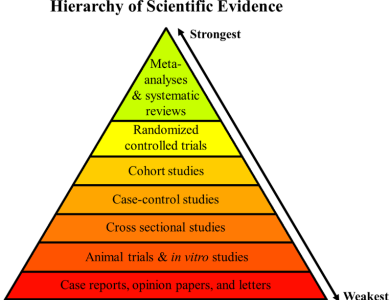What is machine learning all about?
74
The term machine learning was invented in the 1950s when Arthur Samuel (AI pioneer) made the first self-learning system for playing checkers. He observed that the system improved its performance the more it played.
Fueled by advances in computer sciences and statistics, as well as the growth of neural networks and better datasets, machine learning has truly taken off in recent years.
Today, whether we realize it or not, machine learning is everywhere ‒ image recognition, automated translation, self-driving cars, voice search technology, and beyond.
In this guide, I will explain how machine learning works ways in which different industries use it and how you can start a career in ML.
So, Why wait? Let’s start.
What is machine learning?
system learning, often shortened to ML, falls under the umbrella of synthetic intelligence (AI) and makes a speciality of refining pc algorithms to decorate their overall performance mechanically with experience and information usage. definitely placed, device mastering empowers computer systems to study from facts and make decisions or predictions without express programming.
At its essence, machine learning revolves around crafting and deploying algorithms that facilitate these decision-making processes and predictions. These algorithms are engineered to enhance their efficacy over time, becoming more precise and efficient as they analyze more data.
In conventional programming, a computer adheres to a set of predetermined instructions to execute a task. However, in machine learning, the computer is presented with examples (data) and a task to execute, leaving it to discern the approach to accomplish the task based on the provided examples.
For instance, suppose we aim for a computer to identify images of cats. Rather than furnishing specific directives on cat attributes, we furnish it with thousands of cat images and allow the machine learning algorithm to discern the common patterns and features defining a cat. With continued exposure to more images, the algorithm enhances its ability to recognize cats, even when encountering unfamiliar images.
This capability to learn from data and refine performance over time renders machine learning immensely potent and adaptable. It underpins numerous technological breakthroughs, encompassing voice assistants, recommendation systems, self-driving vehicles, and predictive analytics.
Types of machine learning
Now, this type of artificial intelligence can also be classified according to its way of operating, which are:
Supervised learning
It is based on grouping or dividing the data according to its particularities, in addition to receiving data training to weigh its results. To do this, it uses numerical values or class labels, which will be your reference and example, from there they can predict actions in completely new future situations.
Unsupervised learning
In this case, to function, it does not receive training on patterns to process the data provided, but rather it performs this task itself and discovers how to do it. It still has great potential in organization and acting by default, therefore it does not take into account probabilities previously studied, reaching resolutions explored and verified by the same system.
Reinforcement learning
It is where the behaviour of the system is studied in an environment that has not been presented or given any type of training. This is how it begins to develop solutions through trial and error, taking rewards and penalties as a reference. This way it will improve its decisions as more information it will be collected.
What areas of application are there for machine learning?
Over the past two decades, technological advances have made machine learning a core component of technology and business. I would like to give a few examples of areas of application for machine learning:
Machine learning in customer relationship management
Machine learning has a wide range of applications in customer relationship management (CRM) to improve efficiency and effectiveness in CRM and of course, increase customer value. Since a lot of customer data is traditionally available in CRM, the potential for optimization along the entire customer life cycle is enormous:
- Predict future profitability or up-cross-selling potential using customer lifetime value forecast models
- Calculate product affinities with the Next Best Offer
- Perform customer segmentation for personalized marketing
Personalization in marketing
An important area of application for machine learning in marketing is personalization. Machine learning can learn customer preferences and behaviour and compare them with those of other customers – the result is individual product or action recommendations for each customer at a given time.
- Product recommendations webshops: “Customers who buy this product also bought…”
- Personalized websites for streaming providers and webshops
- Customer segmentation based on various metrics ( CLV, RFM ) leads to personalized marketing strategies
An exciting new example is the McDonald’s drive-thru: at some locations, cameras with image recognition are used to recognize vehicles and therefore customers and to make certain product suggestions to them.
(IT) security
Typically, critical IT systems are usually secured with the help of Security Information and Event Management (SIEM). The problem here is the great effort and personnel required to respond to potentially security-related events.
- Difficulty: reacting to increasingly sophisticated methods used by hackers with criminal intentions
- Solution: Machine learning models for monitoring IT systems
- These can process much larger amounts of data at a higher speed
- Recognizes subtle but also complex methods
Digital assistants
Digital assistants are probably the most prominent applications of machine learning in everyday life. A survey by Splendid Research in 2019 showed:
- Of around 1,000 respondents, 60% have already operated a device using voice control.
- Two years earlier it was just 37% of the almost 1,000 respondents.
- Of the 605 people, 19% said they used such systems several times a week, and 11% of users even said they used them daily.
- Most popular use cases: Get search results from Google (52%), play music (51%) and display the weather (46%).
Digital assistants are also increasingly being used in other forms. For example, modern camera systems are supported by AI modules to set optimal presets for the image or to recognize and track people and objects in the image.
Mobility
Machine learning is becoming increasingly common in mobility and transport. Autonomous driving is a good example:
- Various sensor data are evaluated and precise information about the vehicle condition and the surroundings is generated.
- Neural networks enable safe navigation in traffic and react to critical situations in real-time.
Machine learning models are also used in the infrastructure, for example, to optimize traffic light switching at large intersections.
These intelligent systems detect the accumulations of cars and are intended to prevent traffic jams by reactive switching of the green phases.
The Top Machine Learning Career in 2024
Machine learning has opened up a whole range of career opportunities. From AI engineering to data science, professionals with ML skills are in high demand. Let’s explore one of these career paths:
Data scientist
A statistics scientist makes use of medical algorithms, approaches, methods, and systems to extract insights and knowledge from dependent and unstructured records. gadget learning is an vital device in a records scientist’s arsenal, permitting them to discover patterns in facts and make predictions.
And the major pro point of becoming a data scientist is the ‘easy pathway’. You don’t have to invest your 5-10 years to acquire a big computer science degree, all you need is the right skills and expertise.
But to get the right skills you’ll have to take an advanced data science course. Some data scientists even consider taking data analytics courses too.
And to get the right expertise you’ll have to practice a lot and you might need to enroll in training programs and volunteer in your desired company.
Bottom Line
Machine learning is all about Artificial Intelligence and computer algorithms, and there is no end to the immense opportunities it provides. You can be a data scientist, a data analyst and whatnot.
So, enlighten yourself about the subject of machine learning by studying it, taking courses, and training sessions. moreover, if you’ve studied it absolutely and need to build a career in this field, consider turning into a statistics scientist or a information analyst, due to the fact each of those fields are very profitable.
You just need to take a proper data analytics course or a statistics analytics direction to get the proper skills in these domains, and you then’ll be eligible to apply at your dream company.
Name: ExcelR- Data Science, Data Analyst, Business Analyst Course Training in Delhi
Address: M 130-131, Inside ABL Work Space,Second Floor, Connaught Cir, Connaught Place, New Delhi, Delhi 110001
Phone: 09632156744
Business Email: enquiry@excelr.com
Hashtags: #machine #learning
Stay Tuned with worldtechpower.com for more Business news.





